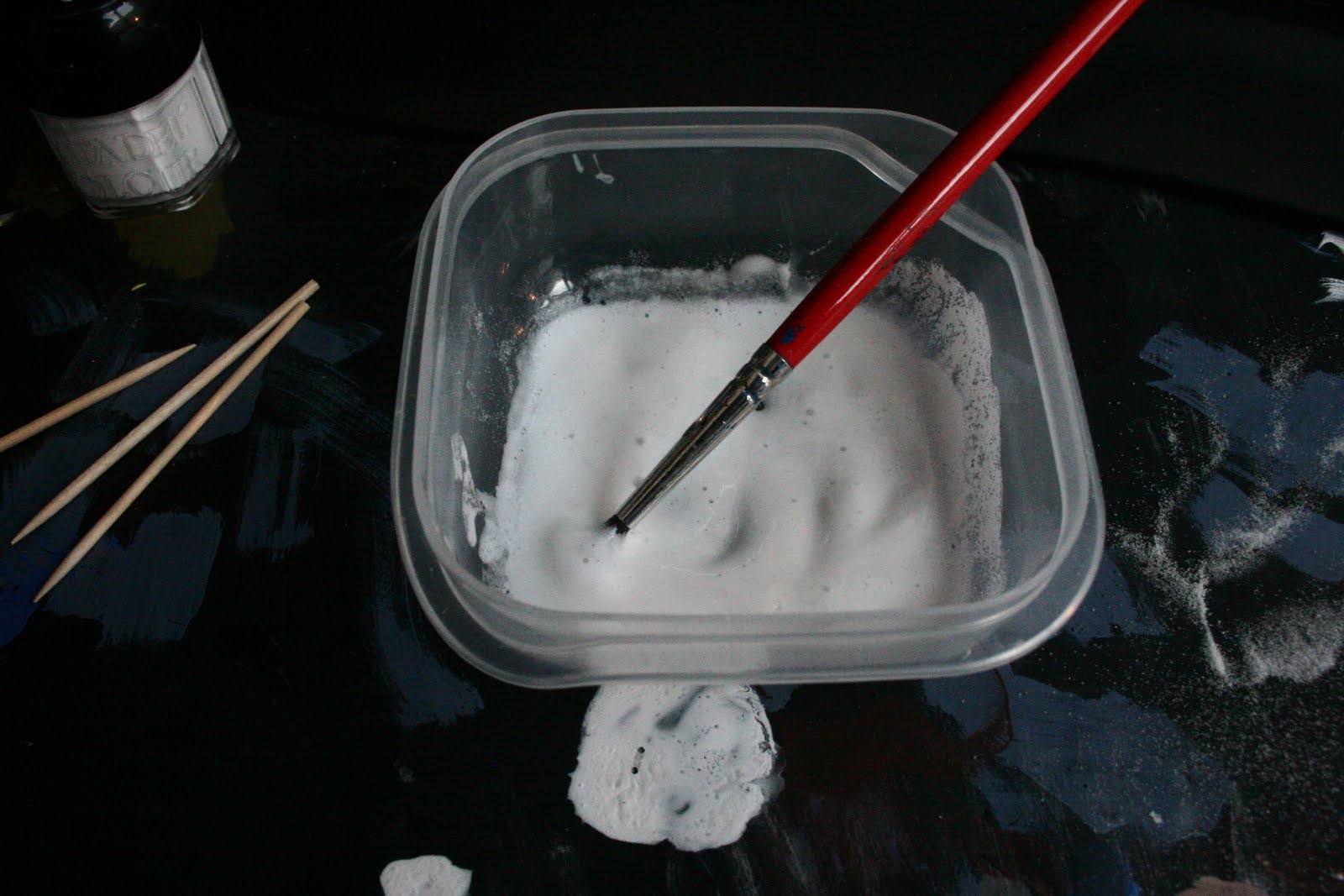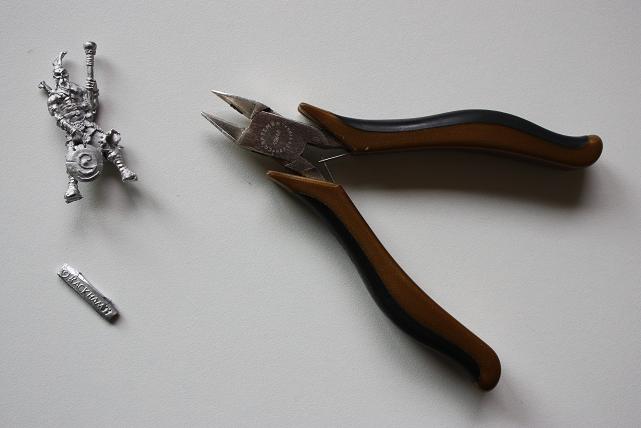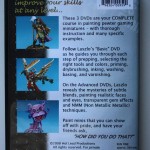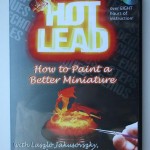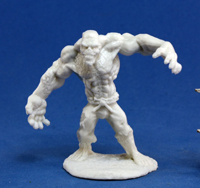Editor’s note: This article was originally published by weetoysoldiers.com at
http://www.weetoysoldiers.com/wp/?page_id=34 and is reprinted here with permission of the author in accordance with the terms defined by the author’s release posted on weetoysoldiers.com before its demise. I have not modified the prose in any way, except to remove dead links (indicated in red) and add captions to the images. Regrettably, I was unable to secure copies of the 100-frame drying gesso animation and larger images of some photographs before weetoysoldiers.com went offline. These may be uploaded at a later date, however, if I am contacted by or can locate the original author.
Priming With Acrylic Gesso
by Hyun (weetoysoldiers.com)
Originally posted: September 19, 2005.
Last updated: February 27, 2007
Latest changes: Added some photos of painted miniatures that were primed with gesso.
Click here to jump to the new section. Click here to see the history of changes to this page and project.
September 19, 2005
I first came across gesso a few months ago on TheMiniaturesPage.com discussion forum. At once I was intrigued: Here was something that could be brushed on, was non-toxic, water-thinnable and water-washup, and works wonders as a primer? I must investigate!
I had primarily used spray-can varieties of primers, anything from hobby-specific like the Tamiya Gray Surface Primer, to the hardware store-variety like OSH or Krylon or Rustoleum Painter’s Touch. They all work well more or less, but, in my opinion, have a few major drawbacks. One, the weather and lighting condition has to be right — too much humidity or too windy or too late at night, and you’re out of luck. Second, and more importantly, the solvent- and lacquer-based primers have nasty, often carcinogenic, toxic chemicals that I’d rather do without. Third, unless you’re really careful, it’s easy to overapply the primer and end up with buried/obscured details.
Gesso is a thick-ish liquid surface preparatory compound used to prepare artist’s canvass before painting. It contains finely ground chalk with some sort of glue or binding agent. Different brands of gesso are made differently — apparently some carry carcinogenic warnings, and some are certified non-toxic. I’ve also read that it’s made of plaster of Paris with glue. Either way, it provides an excellent adhesive “tooth” for paint to grab onto. I’ve been priming miniatures with gesso for the past six months, and have been very pleased with results.
Now, the obvious down side is that it is brush-applied, and thus, somewhat time-consuming. This may not matter if you are a sloooooow painter like me, for whom the measure of progress and achievement is not the number of finished miniatures, but rather a happily cluttered workdesk full of miniatures in progress. I’ve heard of people asking about airbrushing gesso, but I honestly wouldn’t recommend it — the mix is thick enough to guarantee blocking and messing up your airbrush. And if you thin it to the point of being able to somewhat successfully airbrush it with an external-mix airbrush, then I would venture to guess that it would lack the cohesion to act properly as a primer.
The local craft stores carry Liquitex brand (the only brand I’ve used) of acrylic gesso in white, black, and clear. You can tint the white and clear gesso with inks or paints of your choice (well, you can lighten black gesso as well, I suppose, but most people will find it easier to go from white to darker than black to lighter). I started out with white gesso and tinted it with black craft acrylic paint, to give a nice, neutral grey look. I thin it with Tamiya airbrush thinner, but you can also use distilled water. Liquitex website states that you can use up to 1:4 ratio (20%) of water to gesso to thin, and to use water and the Liquitex Matte Medium in equal amounts if thinning more than 20%. I’ve thinned it way more than 20% using the Tamiya Airbrush Thinner, but I’ve found that thinner gesso tends to get scratched off easily in handling.
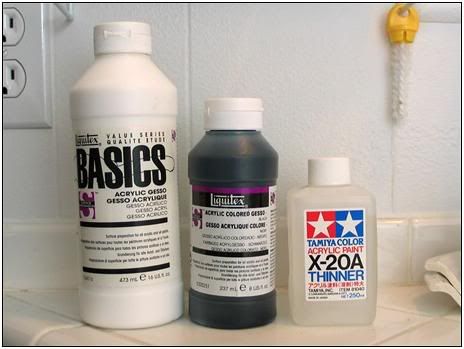
Image 1.

I eventually got a bottle of black gesso as well, as I found myself applying a coat of black ink wash to grey gesso-primed miniatures when I absolutely needed a black basecoat.
Here are my supplies for making primer mix — Gesso, Delta Ceramcoat craft acrylic black paint (99 cents at the local craft store), Tamiya airbrush thinner in a dispenser bottle, and of course, a mixing pot:

Image 2.
The following image shows the progression of mixing gesso: first you start out with a dollop of gesso (the quantity obviously depending on how many miniatures you are going to prime!), then add black paint, then add thinner or water and mix thoroughly, and finally, you have a nice, shiny, smooth solution of primer, ready to use.
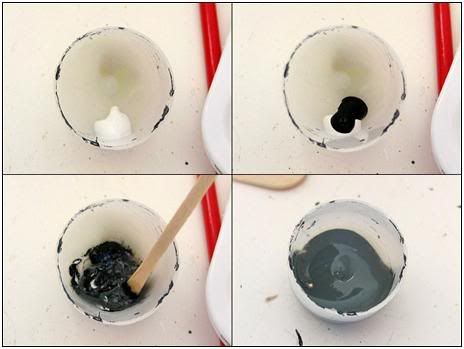
Image 3.
Here are two pictures of the Lord of the Rings plastic Warrior of Minas Tirith figure, before and after priming with gesso:

Image 4.
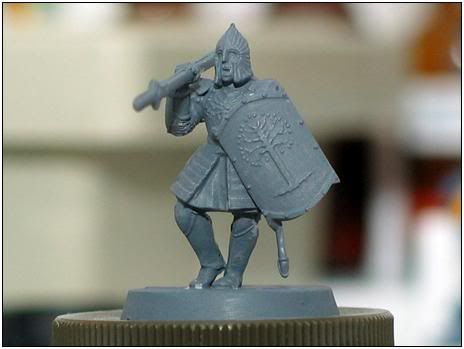
Image 5.
When applied, gesso goes on thick and obscures details, but as it dries, it shrinks down and goes on flat. In fact, it works so well that you can apply it directly to prepainted figures with no loss of detail (this would obviously depend on how thickly the paint was used in painting the figure):
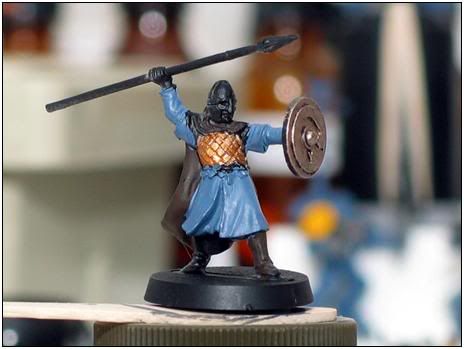
Image 6.

Image 7.
Another nice thing about working with gesso is that you have absolute control over how it’s applied. Put it on too thickly?
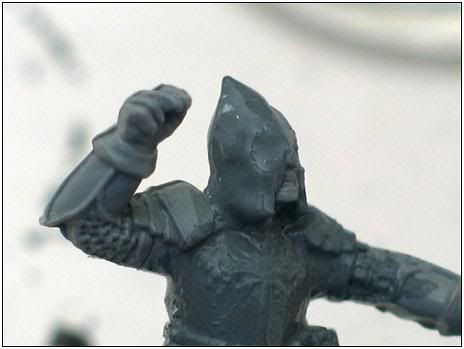
Image 8.
No problem! Just use the brush to wipe away the excess. Much easier, cleaner, and safer than trying to damage-control over-applied spray can primers.
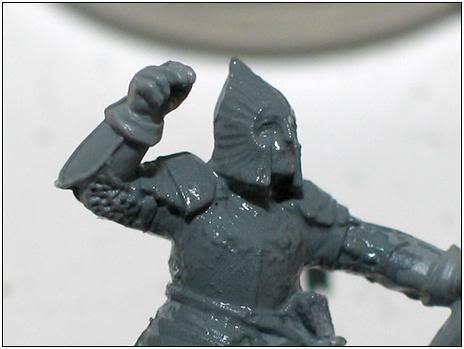
Image 9.
… notice how gesso obscures details above when it’s wet. It dries down to reveal the details:
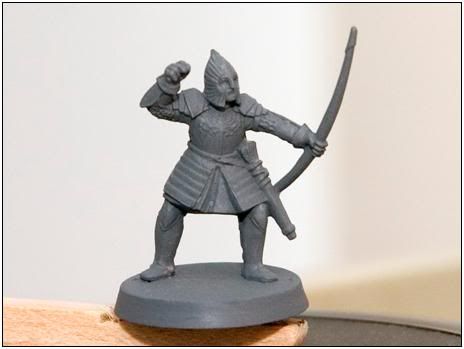
Image 10.
Here is a comparison photo showing gesso-primed plastic gun (above), and before priming (below):
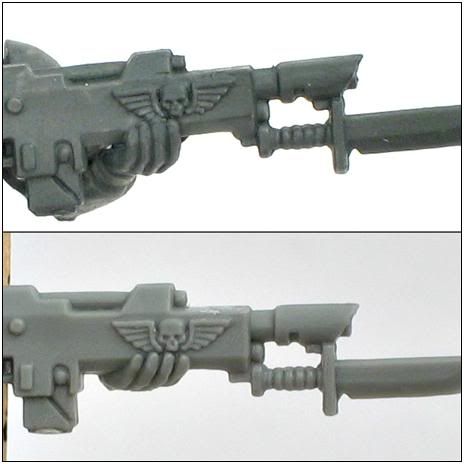
Image 11.
Here’s a picture of a white-gesso-tinted-with-black primed metal miniature, from the Dark Age line of figures. The leftmost one is primed with gesso, then baremetal, then a figure primed with Tamiya spray can grey primer:
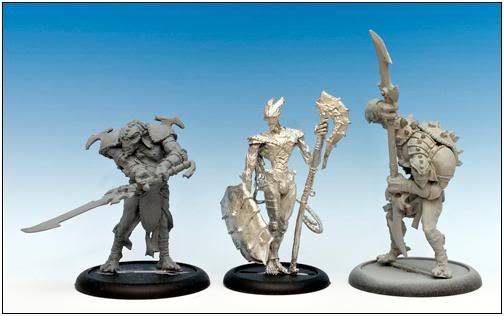
Image 12.
Click here to view larger version (1800×1123, 407KB)
… and a closeup of the gesso-primed miniature:

Image 13.
Click here to view larger version (1200×989, 271KB)
When the leftover gesso dries, it peels off in one rubbery piece:
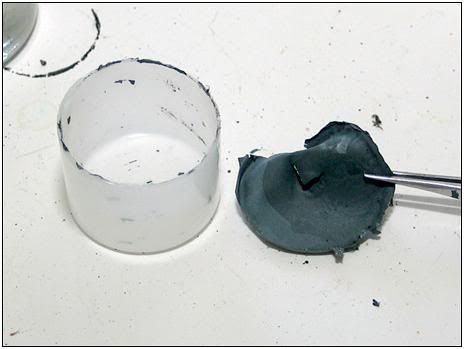
Image 14.
One note about gesso safety. Apparently, some brands of gesso come with carcinogenic warning labels. The Liquitex brand I use is certified non-toxic, including meeting the California Proposition 65 requirements. Here’s the blurb from the MSDS (Material Safety Datasheet) for their gesso:
“Product has been certified as non-toxic by The Art and Creative Materials Institute, Inc. and conforms to ASTM D-4236 Standard Practice for Labeling Art Materials for Acute and Chronic Adverse Health Hazards.”
There you have it. Obviously, if you have hundreds of figures to prime at once, or if you are working with smaller models (say 10mm and smaller) where any kind of primer might obscure details, it may not work for you. But if you are looking for a safer, use-at-any-time method of priming your miniatures, give gesso a shot!
Added: January 17, 2007
Over on TMP, there is a thread going on about using gesso as primer. As regular visitors of WeeToySoldiers may know, I’m a big fan of using gesso for priming figures for many reasons, not the least of which is that I like to paint late at night, which effectively precludes using spray can primers.
One poster, a user of gesso, commented to the effect that you don’t really need to add water or otherwise thin gesso. His exact words were “jam the gesso into the crevices and glop it on. Dries perfectly thin.” This piqued my interest, as well as (it must be admitted) a dose of skeptism. I’ve always thinned my gesso, and have gotten good results with it. Oh sure, usually you have to go back and touch up where gesso shrank and created bare “pinhole” spots, but that’s easily done (gesso shrinks as it dries, which makes it an ideal primer, as there is no or minimal loss of details). Thinned gesso also seemed more prone to being scratched off or otherwise damanged in handling, but I attributed that to just “gesso being gesso.” To be sure, painted figures that were primed with gesso seem to wear handling just fine.
So, my curiosity being aroused, I decided to experiment with non-thinned gesso, straight from the bottle, and furthermore, to “glop it on” and see how it’d dry. For the experiment, a brave Urban Mammoth Junkers Convict Legionary “volunteered”:
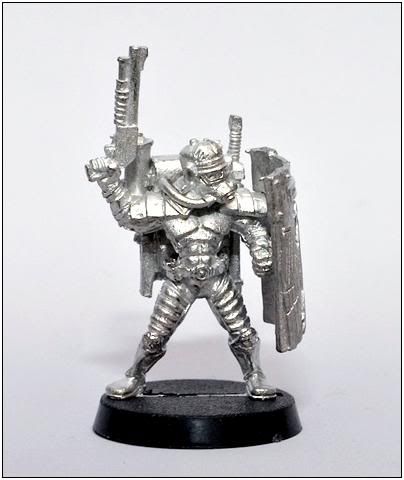
Image 15.
Here’s my black gesso, a Liquitex brand variety:

Image 16.
… and here’s the gesso, straight from the bottle. I actually ended up using about 3x that amount, as I applied it rather liberally!

Image 17.
Now, here are the pictures of the experiment in progress. First, we have the Legionary with its side and front profiles:
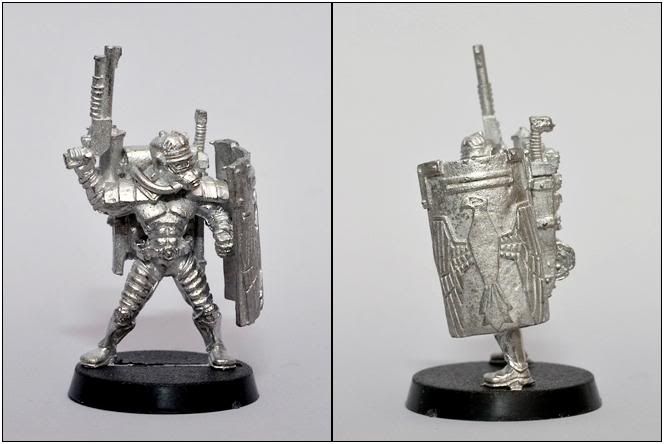
Image 18.
Here the gesso has been applied. Notice the complete loss of details! I had to edit the image to overexpose the shots, to draw the details out.
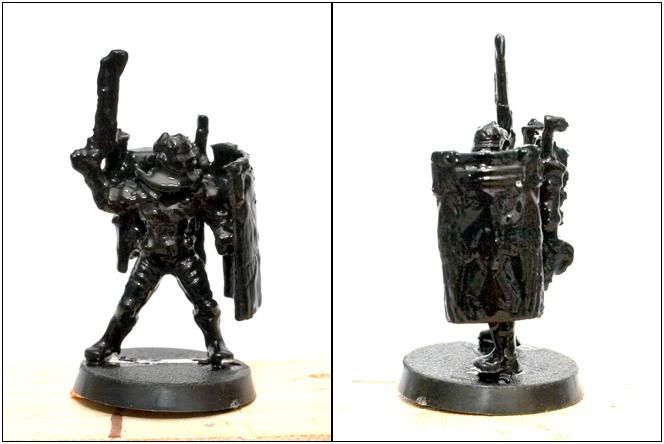
Image 19.
Some people say to let gesso dry for 24 hours before painting over them. I don’t know if that really makes that much difference. I’ve painted over gesso-primed figures after as little as a few hours, and have had no negative results, but I can’t say conclusively that you have to or don’t have to wait X number of hours.
Anyway, here’s the figure, two hours after the gesso was applied:
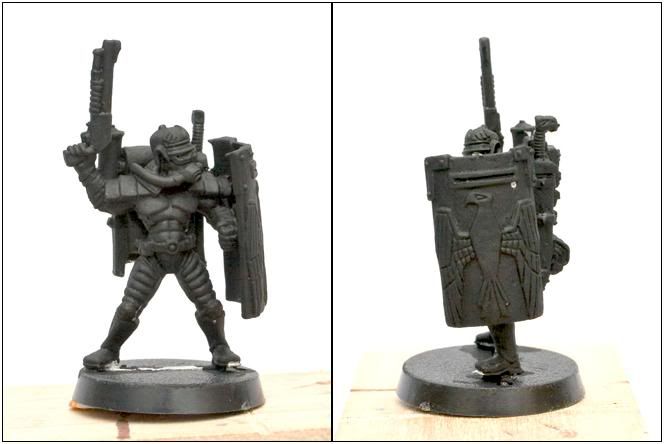
Image 20.
Well, I do stand corrected! It seems pretty amazing that all that gesso dried up and shrank, but it does seem to appear that that’s the case, doesn’t it? There’s a pinhole bare spot on the shield that I’ll need to touch up, but the shrinkage-induced bare spots are far, far fewer and smaller than when I use thinned gesso. Well, how about that!
The next two pictures show comparison shots of the head area, and the shield details:
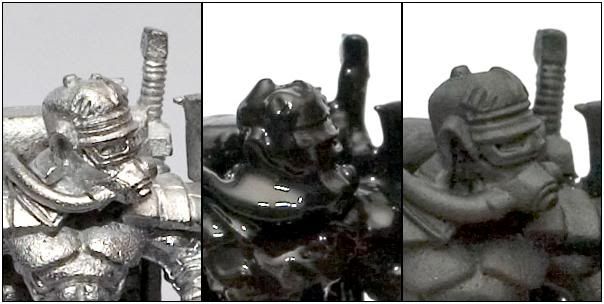
Image 21.
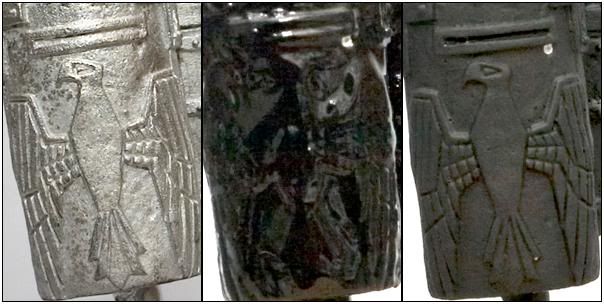
Image 22.
I’d be interested in hearing about your gesso techniques and habits!
Added: February 25, 2007
Watching Paint Dry.
Well, actually, not paint, but gesso.
The section above on using non-thinned gesso has turned out to be quite popular, judging from the website statistics. A common refrain I see that it’s almost unbelievable how much gesso manages to shrink as it dries.
Well, wonder no more. Here’s an interesting time-waster for you to enjoy — a series of photos of gesso drying on a miniature! Thanks to the intervalometer setting on my digital camera, this was achieve with minimal fuss and also with far greater precision than anything I could’ve managed manually.
Basically, I set up the camera to take 100 photos in sequence automatically, one every minute. Then the figure was primed, and the camera activated. So we went from:
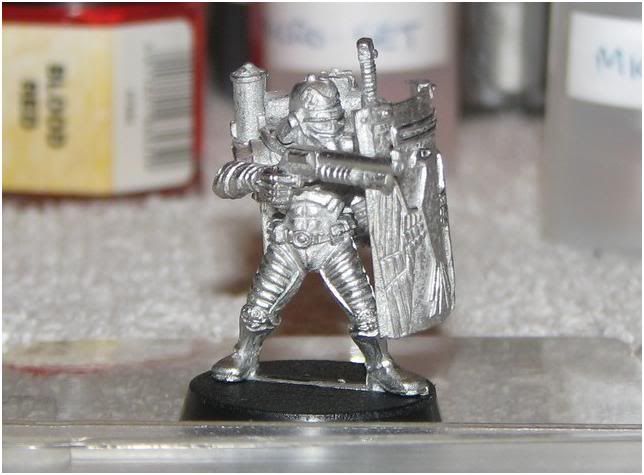
Image 23.
… to this…
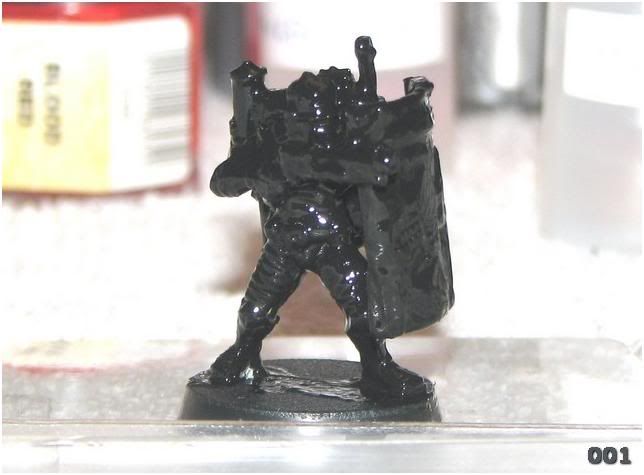
Image 24.
… to this:
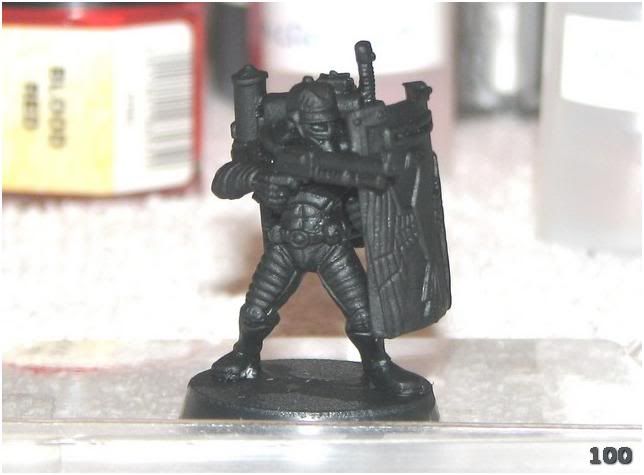
Image 25.
… and you get to see it, each step of the way!
There are two ways to view it. The first is a vertically scrolling webpage with the 100 photos (actually 101, including the shot of the figure before it was primed) in sequence. You can see that by clicking on the image below:
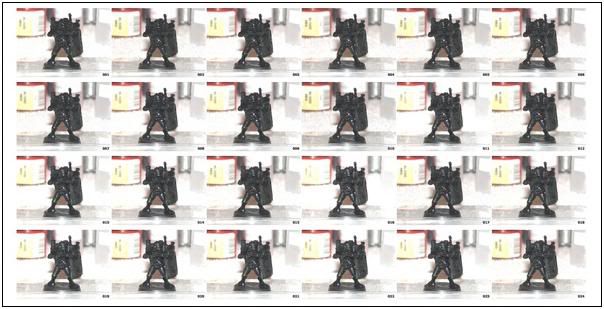
Image 26.
The other method requires you to have Javascript enabled on your web browser. It’ll launch a new window, in which the 101 photos will display in sequence as an animation. The default setting is for image to change every 0.5 seconds, but that can be adjusted by you during the playback (”500″ is 0.5 seconds, so if you want one second delay, type in “1000″ and click on “Change Interval” button; “250″ for 1/4 second, etc.). There’s a 3-second pause before it’ll loop again once it reaches the end of the animation.
Click here to see animation of gesso drying.
Hope you found this interesting!
Added: February 27, 2007
Here are some finished miniatures that were primed with gesso.
The LotR High Elf Warrior and the Ultramarine sergeant were primed with gesso; the Imperial Fists marine in the middle was spray-can primed.
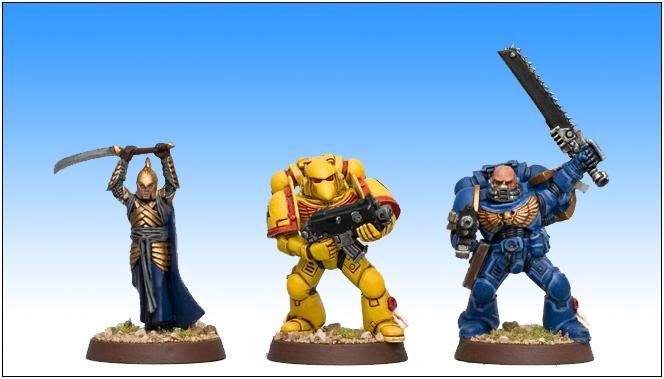
Image 27.
Night Goblins from The Battle for Skull Pass set, primed with gesso:
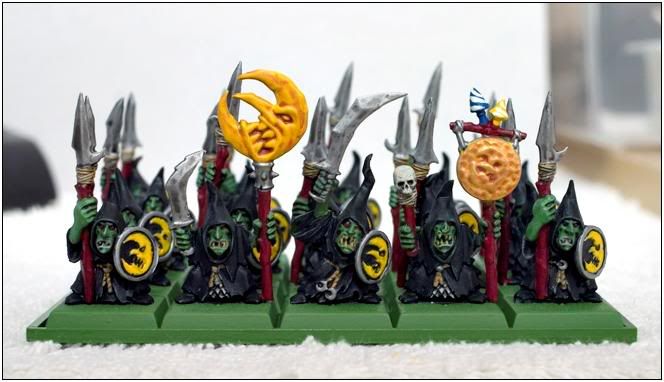
Image 28.
Dwarf Miners from the Skull Pass set, primed with gesso:

Image 29.
Skull Pass Dwarf Thane, again primed with gesso:

Image 30.
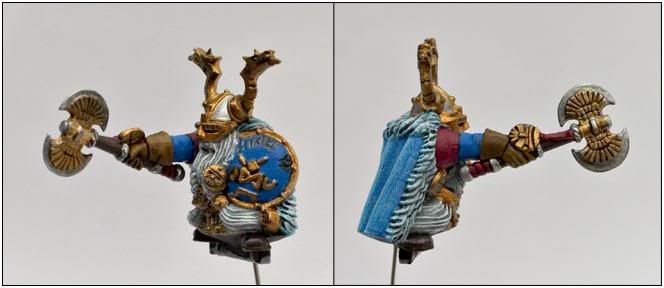
Image 31.
Skull Pass Dwarf Warriors (can you tell what I’ve been working on lately…)
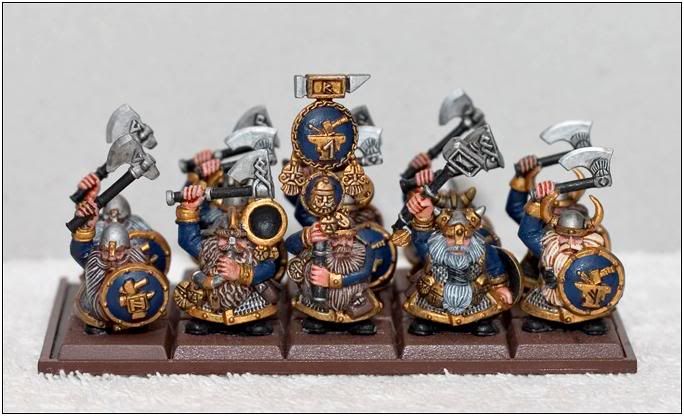
Image 32.
History of changes:
September 19, 2005 — article posted online.
October 26, 2006 — general content addition, including spray primer hazards, non-toxicity of gesso, and thinning gesso. Added external links to the Liquitex gesso product information page, and its MSDS (Material Safety Datasheet) page. Added two pictures of a gesso-primed metal miniature. Changed the article title from “Acrylic Gesso as a Primer” to “Priming with Acrylic Gesso.”
January 17, 2007 — Added test results of applying non-thinned gesso straight from the bottle.
February 25, 2007 — Added 100 sequential photos of gesso drying. Yep, watching paint dry!
For more information:





